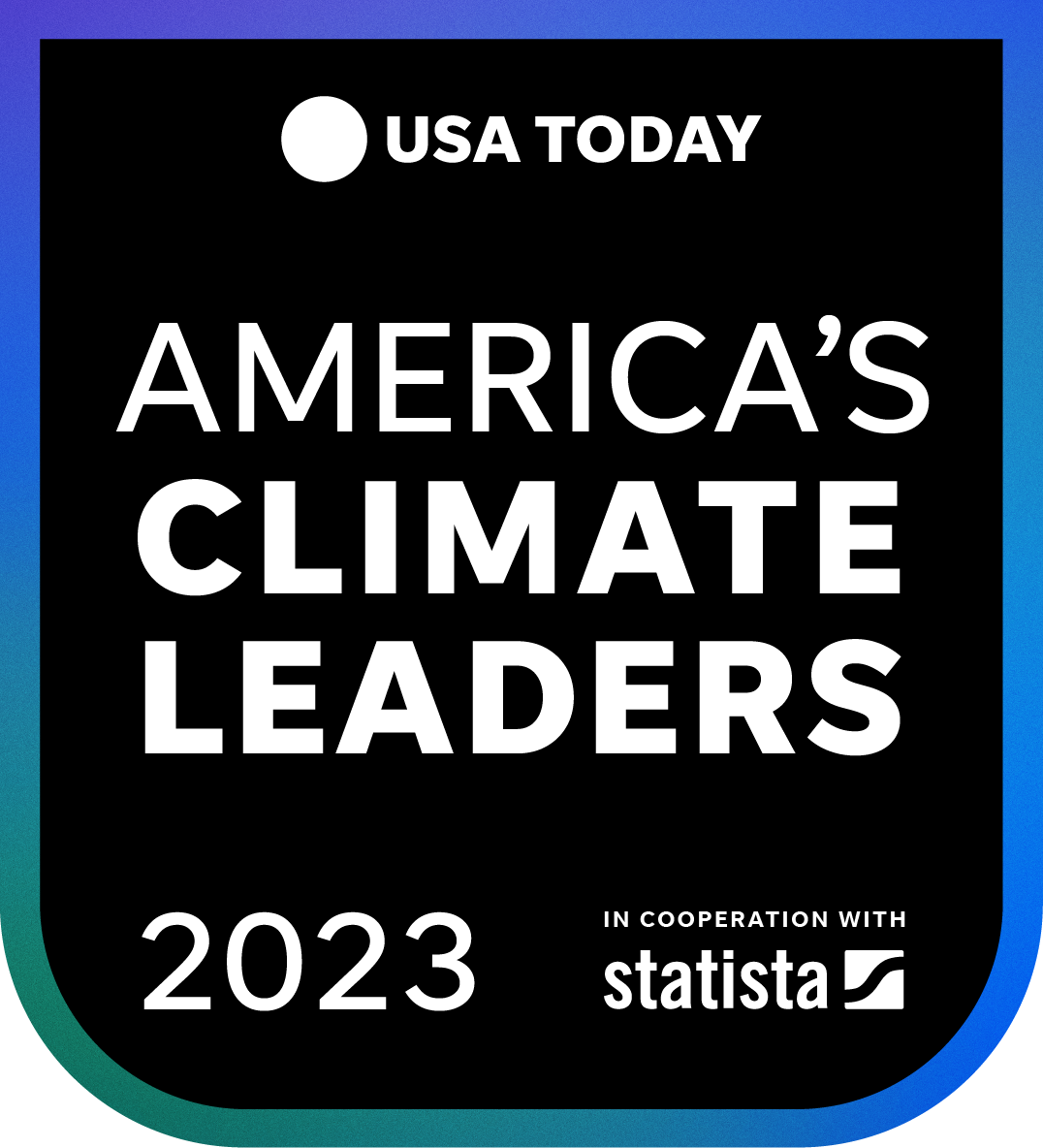
Illustration by Spencer Holladay, USA TODAY Network; Getty Images
America's Climate Leaders list, according to USA TODAY and Statista, recognizes companies' efforts to reduce greenhouse gas emissions.
Illustration by Spencer Holladay, USA TODAY Network; Getty Images
Industry produces 23% of U.S. greenhouse gas emissions, which makes cleaning up businesses a crucial part of the fight against climate change.
Evaluating such efforts is complex and daunting, requiring deep dives into multiple, sometimes conflicting metrics. Even how companies should measure their carbon footprints is a work in progress.

To help cut through the confusion of which companies have reduced their greenhouse gas emissions, an inaugural list of America's Climate Leaders was developed for USA TODAY by market research firm Statista. It is a data-driven recognition of companies that cut their carbon footprint in recent years, a noteworthy achievement for investors, customers and anyone who is trying to make sense of these still-evolving measures.
“The business sector is a major source of greenhouse gas emissions. That makes them a main point of potential improvement,” said Magali Delmas, a professor of management and faculty director of the Center for Impact at the University of California, Los Angeles.
After months of investigation and data-crunching, an original lineup of 2,000 U.S.-based companies was narrowed to 400 U.S. companies that cut their emissions intensity from 2019 to 2021.
The ranking uses multiple indicators to gain a picture of how good a job companies are doing in this piece of the climate solution.
For consumers and investors, the ranking gives a sense of a company’s trajectory along an increasingly important metric of success.
Though lowering emissions may not immediately affect profitability, such measures will become more important in the long run as governments, including the United States, begin requiring entities do their part to reduce global warming or at least report their exposure to the threats it poses.
The full, interactive list below allows readers to sort by a variety of criteria, including year-over-year reduction of emission intensity, emission intensity, how many tons of CO2 equivalents the company emitted, total emissions reduction, and whether a company participated in two highly regarded programs that set targets for and account for emissions, the CDP and Science Based Targets initiative.

Why companies’ emission numbers matter
Information about companies’ climate impact is quickly becoming key to their corporate standings and ability to meet investor and government expectations. For example, the U.S. Securities and Exchange Commission is expected to release a landmark rule in the coming months that will require publicly held companies disclose the risks they face from global warming.
Being part of the solution, rather than the problem, will be key as such metrics roll out.
Consumers, especially younger people, are beginning to care about what companies they buy from are doing to help stop climate change.
“Customers want to identify with brands they feel share their values, and these values are growing in importance for a lot of people around the world,” said Lincoln Bleveans, executive director of Stanford University’s Sustainability and Energy Management program.
“For Gen Z, this is literally part of the air they breathe,” he said. “It’s like buying dolphin-safe tuna, something that’s gone from the edge of the conversation to the center.”
Cutting emissions increasingly makes smart business sense and often doesn’t require companies or people to make huge sacrifices.
“Some people might imagine that in order to solve climate change, we need to stop everything and move into huts,” said Alicia Seiger, managing director for the Sustainable Finance Institute at Stanford’s Precourt Institute for Energy.
“But you can still have your hot showers and cold beers and lower greenhouse gases. It’s a sign of efficiency, innovations and new technology and business models.”

How companies were chosen
The rankings began with a list of more than 2,000 US-based companies with revenue of more than $50 million in 2021. Of those, 700 reported their emissions data, making a verifiable ranking possible.
“Sustainability is only one aspect to use when evaluating companies, but we all know it’s becoming more and more important,” said Statista analyst Lisa Abels. “This list gives perspective on what companies have accomplished in the last years and are preparing for the future.”
Here are some of the data and considerations used in the rankings:
- Emission intensity: The amount of greenhouse gas the company produced relative to its revenue. This helps put big companies and small companies on a level playing field.
- Annualized reductions in emission intensity: Calculated between 2019 and 2021. Companies that showed low reductions were not considered.
- Carbon disclosure rating: A measure of a company’s environmental sustainability. These rankings are administered by CDP, a nonprofit that runs a global disclosure system for companies’ environmental impacts.
- Other criteria: Some enterprises were excluded if known business practices suggested they couldn’t be seen as a climate leader.
- Data used: Scope 1 and 2 emissions, based on the Greenhouse Gas Protocol, the world’s most widely used greenhouse gas accounting standard.
For definitions of each emission measure, please see below the listings.

Emissions measures definitions

- Core emissions reduction YoY: Reduction in core greenhouse gas emissions, adjusted by revenue growth, from 2019 to 2021.
- Emission intensity: 2021 greenhouse gases, in tons, per $1 million in company revenue.
- Core emissions: 2021 Scope 1 and 2 carbon dioxide equivalents in tons.
- Core GHG reduction: Total reduction of core greenhouse gas emissions from 2019 to 2021.
- Reported scope 3 emissions: Scope 3 emissions in 2021. Scope 3 refers to indirect emissions which can currently be reported on multiple levels and therefore vary enormously. For that reason, absolute figures have been left out.

Initiatives definitions
- CDP Rating: CDP is the most prominent "rating agency" for emissions reporting and reductions. It is a nonprofit organization founded in 2000.
- SBTi Participant: The Science Based Targets initiative is a partnership between CDP, the United Nations Global Compact, World Resources Institute and World Wide Fund. It helps companies set targets to contribute to a stop in climate warming.